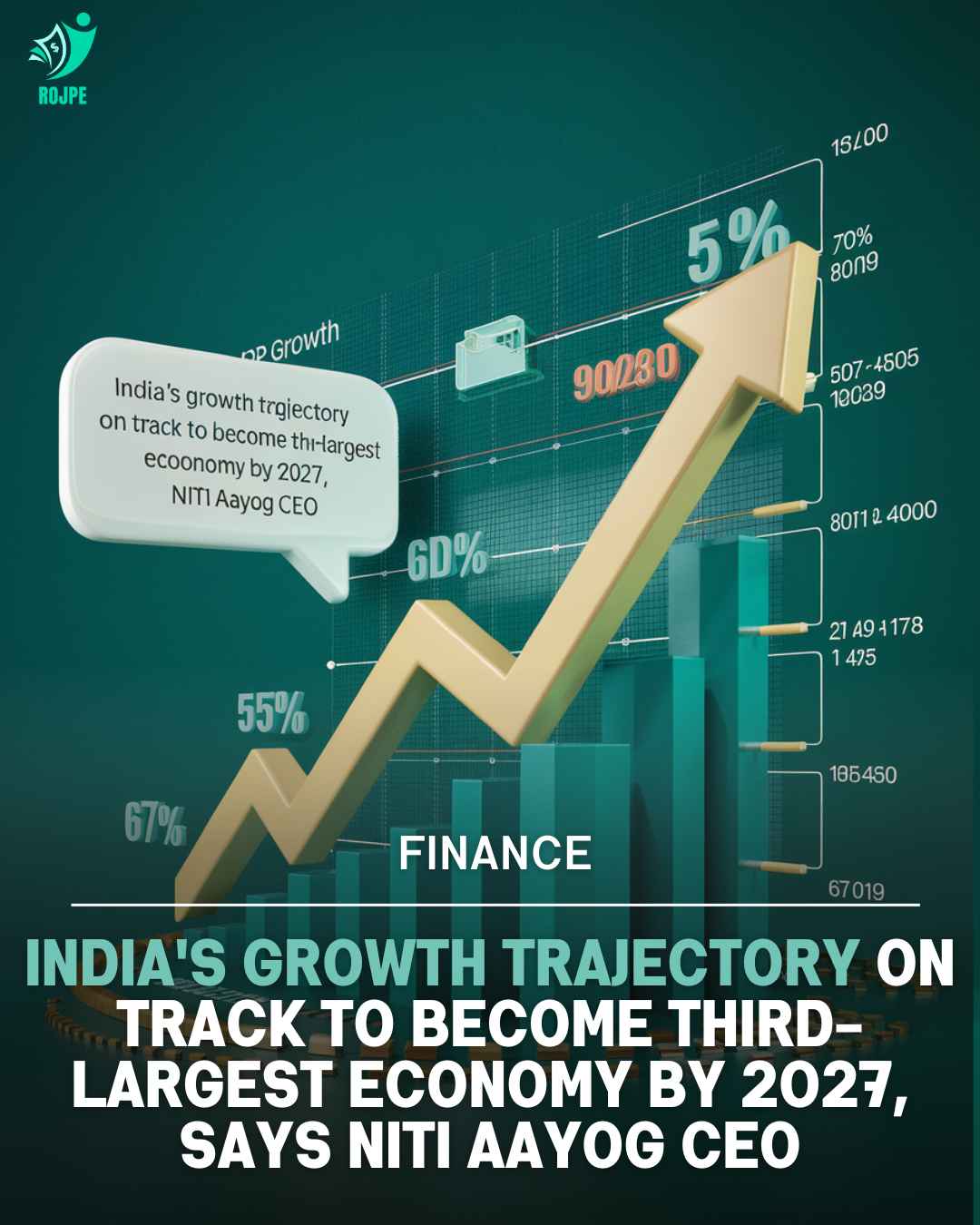India's Growth Trajectory on Track to Become Third-Largest Economy by 2027, Says NITI Aayog CEO
December 6, 2024

India is rapidly advancing toward its goal of becoming the world’s third-largest economy by 2027. This ambitious vision, laid out by NITI Aayog CEO, highlights the country's robust economic trajectory, underpinned by a combination of strategic reforms, growing investments, and strong domestic demand. Despite challenges posed by global economic uncertainties, India’s path to success is set on a steady course.
Economic Growth Outlook
India is projected to sustain a remarkable annual growth rate of 6.6% from 2024 to 2028. This growth is expected to be driven by key sectors such as manufacturing, services, and digital infrastructure. As one of the world’s largest consumer markets, India’s domestic consumption is anticipated to continue its upward trend, fueling economic expansion. Additionally, the government’s proactive economic policies and reforms, such as the Atmanirbhar Bharat Abhiyan and the Production Linked Incentive Scheme (PLI), are expected to play a pivotal role in fostering both foreign and domestic investments.
Key Factors Driving India’s Growth
Strategic Reforms: The Indian government’s continued focus on reforms to improve the ease of doing business and enhance infrastructure will be instrumental in creating a conducive environment for economic growth. These efforts include simplification of tax structures, better regulation of the labor market, and advancements in digital payments and fintech sectors.
Rising Investments: Foreign direct investment (FDI) inflows have surged in recent years, with sectors like technology, renewable energy, and manufacturing attracting significant capital. India’s competitive advantage in sectors such as IT services, digital infrastructure, and clean energy will continue to attract global investors.
Domestic Consumption: With a growing middle class and rising disposable incomes, India is poised to be a leader in global consumption markets. This domestic demand will act as a buffer against external economic shocks and propel the country toward its goal of becoming the third-largest economy.
Digital Economy: India’s digital transformation, particularly in fintech and e-commerce, will play a crucial role in propelling growth. The increasing penetration of the internet and smartphone usage is creating new opportunities for businesses and enabling financial inclusion for millions of Indians.
Global Positioning
India is already the world’s fifth-largest economy, and according to projections, it is well on its way to surpassing the UK and Japan in the next few years. The expansion of infrastructure, combined with the rising contribution of manufacturing and technology sectors, positions India to be a significant global player.
The rapid growth of India’s digital economy and strong ties with other emerging markets, such as ASEAN and Africa, provide ample opportunities for the country to shape global trade dynamics. Moreover, India’s strategic partnerships with global leaders, including the US and European Union, further enhance its ability to attract investment and trade.
Conclusion: India’s Promising Future
With a young, dynamic workforce, a growing domestic market, and ongoing policy reforms, India is on the verge of realizing its ambition of becoming the third-largest economy in the world by 2027. As the global economic landscape evolves, India’s resilience, adaptability, and strategic positioning will ensure that it remains a key player on the world stage.
India’s economic growth story is one to watch closely in the coming years as it continues to rise and redefine its place in the global economy.
